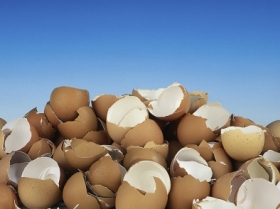Research: Coarse limestone – better eggs

Limestone particles need to have a certain size to have effects on laying performance and egg shell strength in laying hens recent research at the Institute of Animal Science in Czech Republic reveiled.
One hundred and twenty ISA Brown hens aged 24–36 weeks and 120 ISA Brown hens aged 56–68 weeks were used to study the influence of limestone particle size and the animal’s age on laying performance and egg quality.
Two diets were used:
a diet containing calcium carbonate in fine limestone particles (diet LF with limestone particles <0.5 mm), and
a diet containing calcium carbonate in coarse limestone particles (diet LC with 91% of particles larger than 0.8 mm and smaller than 2.0 mm).
Results
Hen-day egg production was higher and egg weight lower in young hens than in old hens.
Age | 24-36 weeks | 56-58 weeks | ||
Limestone size | LF (fine) | LC (coarse) | LF | LC |
Eggs/day | 87% | 89.4% | 73.5% | 79.9% |
Egg weight | 62g | 63g | 67g | 68g |
Shell weight | – | +2g | – | +2g |
Shell thickness | – | +4 μm | – | +8 μm |
Shell Ca content | – | +2mg | – | +2mg |
Albumen height | – | +0.2mm | – | +0.3mm |
Haugh units | – | +0.8 | – | +0.2 |
No increase in the shell breaking strength was observed.
It can be concluded that LC with a particle size of 0.8–2.0 mm should be considered rather than fine ground limestone when formulating diets for laying hens both in the early and the late phase of production.
The full research can be obtained fromScienceDirect.











